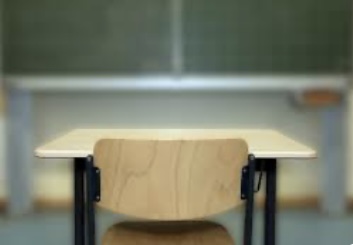Throughout the current school year, AT has faced countless challenges. Whether regarding admin, staff, student, or extra-curricular activities, our school, like many others, is still struggling in various areas to rebound since the pandemic.
With morale recovering, and alumni who experienced pre-pandemic school life having already graduated, AT has been left to redefine the high school experience. This hurdle has not been easy to take on, however. Currently, one of the more serious issues throughout the student body is chronic absenteeism.
Truancy means there is no valid excuse (unexcused) vs. absenteeism is excused or unexcused.
There has been a shown rate in AT school reports of an increase in student absences and chronic absenteeism this year when compared to recent years. Though this number can’t be confirmed completely until the end of the semester, it is higher than before.
There has been a shown rate in AT school reports of an increase in student absences and chronic absenteeism this year when compared to recent years. Though this number can’t be confirmed completely until the end of the semester, it is higher than before.
“I can’t confirm this year’s data yet as we are still in the first semester. But, the percentage of our students who miss 10% or more of school days, which the state defines as chronic absenteeism, has been increasing. This includes COVID absences due to isolation requirements. We will have to wait and see for our numbers this year. You can find this trend on our school report card,” said AT assistant principal Micheal Warren.
There is a standard procedure for students who continue on a path of unexcused absences that is stated in the District 88 student handbook, with severity increasing based on the number of absences a student has. This policy based on the severity of punishment for an unexcused absence can range from just “Teacher Consequences” to “In-School Intervention with additional Interventions, and Pupil Personnel Services Team Discretion on additional Supports,” as stated in the student handbook.
As this rate of absences continues to get worse, the administration is working to create new ways of for informing parents and students of the severity of this issue, as a way for them to hopefully lower the rise in chronic absenteeism that the school is experiencing.
“We are working on student messaging, parent messaging, and creating letters, related to individual students, that will be sent home,” said Warren.
This increase in student absences can be attributed partially to Covid since the data collected by the school on the student absence rate has increased substantially following the ending of remote learning and the Covid pandemic.
“Certainly Covid and the pandemic has impacted our recent attendance data,” said Warren.
As viewed by the admin of AT, Andrews shared that although “absence rates increased during the 2021-2022 school year we believe a factor in play was COVID-19.” The pandemic and its ensuing quarantines prevented students, regardless of their eagerness to learn, from entering our school. To combat this unfortunate setback, AT staff began “the ‘We Care, Be Here’ campaign this year to promote student belonging and help increase attendance,” said Andrews.
Multiple assembly-type approaches were made to push this throughout our school. Staff showed an undeniable increase in student appreciation, and want for their students to be educated in a prosperous learning environment.
Another way the admin incentivised students’ daily presence in class was through a guaranteed boost in their GPA’s. Research to back this claim was carried out by members of the school’s very own Learning Services Department. “There is a direct correlation between student success measures…and student attendance,” said Andrews.
Sharing the perspective of a teacher on the front lines of this dilemna, social studies department member Mark Olson spoke on the importance of learning in the classroom. “…missing days is the #1 detriment to a student’s grade. A coach once told me that ‘you cannot make the club in the tub,’ I interpret that in regard to the classroom as saying, ‘how can you succeed in the classroom if you are not in the classroom.’”
Acknowledging special circumstances for student absences, principal Andrews shared his thoughts on students who have been excused for various differentiating reasons. Valid absences will naturally occur throughout a school year, currently understood by Andrews. However an example of an absence that would be preferably avoided, would be vacation/leisure time. He would rather see these leisure times during breaks (spring, winter, etc.)
In a closing thought on the subject, Andrews provided an example of crucial time students are missing consistently during the week. “Our most impacted period is first period,” he stated. “Students are either arriving late to their first period class or not attending at all more often than all of the other periods.”
Though there has been an increase in chronic absences by students, there has been a decrease in the both ditches and tardies in comparison to last year.
“Current data demonstrate that there are fewer single-period absences and tardies than last year,” said Warren.
This absence not only puts teachers at a disadvantage during first hour periods, as they need to schedule additional make-up time for their students, but it disservices students for the same reason. As we all know students are crammed with work throughout the school day, and students have little time to relearn a lesson.
The increased rate at which students are missing school has shown a clear impact on grades. The amount of time that a student missed from school has shown a negative impact on grades. Students who fall under the title of chronic absenteeism are not exempt from this pattern, shown poorly impacted grades.
“There is a clear trend of days missed negatively impacting grades,” said Warren.
With the growth in student absences, it has also been shown to impact students’ futures once they leave AT when it comes to students graduating and moving on to post secondary education. “There is a clear link between attendance and student achievement. Over time, declining student attendance could impact graduation rates, GPAs, and students moving to post-secondary options,” said Warren.
The staff of AT will continue to encourage students to make the effort to arrive on time, and prepare for their class periods. This obstacle is one of great importance in the sequence of changes that will need to be made to rebuild our school’s atmosphere. Lessening this issue will be a great step in the positive direction for AT.

